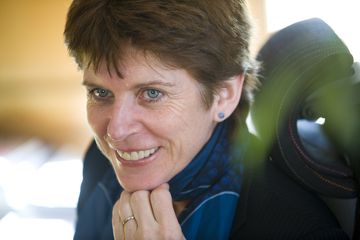Daunting barriers to the leadership position for Indian women in Academia
Recently another woman broke open the doors of very prestigious but male only organization – Oxford University. Oxford University announced its first female vice-chancellor, Louise Richardson, first time for a woman after 800 years the role has been created! This news led our major news publishing house (Times of India) to publish another article on how well Indian women are doing in terms of being Vice chancellors in the Indian Universities. The numbers says only 13 of India's 431 universities have women VCs. In all most all the higher rigor professions there is a vast disparity in the ratio of men vs. women numbers and has been discussed often in media. Actually it is a catch 22 situation where women lose motivation or steps to go higher up because there is no infrastructure, support or peer group for them and that is not getting created because there are not enough women out there. In academia the number of women starts dwindling from higher degree stage (fewer number of female in PhD tenure compared to Master’s degree) as compared to the initial degree program. The ratios are further skewed and that too from bachelor’s degree programs in subjects like mathematics and physics. An interesting article mentions that missing women in higher academic roles are a result of common perception of the society that men are better in decision making and leadership. There are 4 thrust areas where we see women moving out or getting stuck in academics. Efforts need to bridge the gaps drastically to bring up more women in higher position in academia.
Family: A girl gets her first hindrance towards her interest in academics is at home. Girls are disturbed much more than their male siblings for household chores and other activities. In the adolescent year when the interest in a child develops for one particular academic domain is adulterated in a girl’s life with pressure to look beautiful, behave polite, be adjusting, and learn feminine attributes. Indian families often are softer on persuasion to study hard in case of girls than boys because finally a girl needs to just look after her family. But the boy needs to conquer the world. This cycle continues…
Society: Indian society is conditioned to look upon a woman as a slave or a goddess. A woman struggles to be accepted as an equal partner in India to handle responsibilities, make decisions, and take charge. There can be few offshoots but not much. Indian men today are in a very comfortable situation, they get the benefits of marrying a salaried wife but don’t feel responsible to support her in moving up which may need her to relocate to another city or work longer hours. There is no social pressure on men to do so; they don’t have models in front of them either, with minimal support at home women end up taking less challenging roles or leave academia. This continues…
Infrastructure and Money: Academia demands long hours of work, travel for conferences for networking and knowledge sharing, and continuous skill improvement. Indian universities does not normally provide day care facilities inside the campus and academic jobs does not provide enough money to pay for high cost private day care facilities booming in India. Bringing up reasonably priced, safe and hygienic child care facilities with trained staff can boost the career of women in academics for sure. This will also create the much needed employment possibilities for many other men and women in India. During early parenting years, women need to take long breaks because of lack of these facilities and they eventually lose on their research, publication, administration, and teaching years. Selection committees for higher positions (mostly constitute of male faculties) don’t count these and a select a male candidate instead. Also a woman candidate will need maternity benefits, and may cost more for tightly budgeted university portfolios. This continues…
Interests: A girl while growing up absorbs the clues from her surrounding that she is cut out for the family, it is her key area, and anything else would be secondary which needs to be balanced. With this in mind she makes modulates her choices from early on, she thinks of marriage while pursuing her PhD, she thinks of having children when doing her post-doc, after she becomes an academician she puts equal effort in raising her kids. This holds her back in reaching out to her full potential at work; she opts out from challenging roles in initial years. She focuses only on her key functional areas; that are research and teaching. She overlooks other activities which can bring a woman nearer to higher roles in future. She is so busy in combating the present that she does not plan for her future roles. This continues…
















